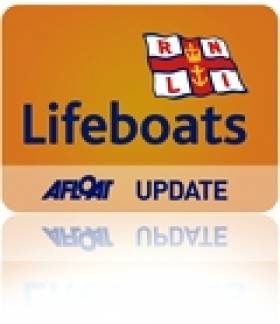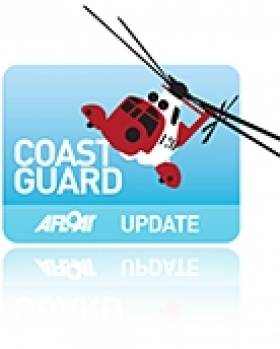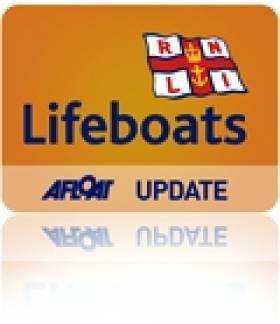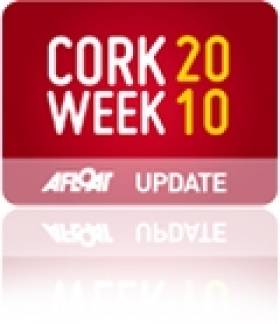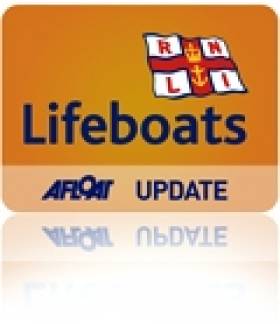Displaying items by tag: RNLI
Busy Weekend for Baltimore Lifeboat
Baltimore Inshore lIfeboat was called into service twice on Saturday to assist vessels in distress in poor weather conditions. A yacht dragging its anchor in Church Strand called for assistance while winds were freshening to force 7 from the southwest with heavy rain and poor visibility. The alarm was raised at 20:15 on Saturday. Helmsman John Kearney and crew Micheal Cottrell and Ronan Calnan provided assistance to the lone yachtsman, helped to secure the vessel and escorted her back to Baltimore Harbour.
Later at 22:40 the inshore lifeboat was again called out to give assistance to a RIB that had gone aground on a rocky shore following engine failure. There was one man and two children on board at the time. The inshore lifeboat was launched again under the direction of Helmsman John Kearney and crew Paul O'Driscoll and Tadhg Collins. Again the lifeboat was able to secure the safety of the vessel and passengers.
Related Safety posts
RNLI Lifeboats in Ireland
Safety News
Rescue News from RNLI Lifeboats in Ireland
Coast Guard News from Ireland
Water Safety News from Ireland
Marine Casualty Investigation Board News
Marine Warnings
Trawler Fouls Prop, Calls Lifeboat for Tow
Ballycotton lifeboat was called on to lend assistance to a 23 metre fishing vessel in difficulties, 31 miles south of Ballycotton today. The Irish registered vessel, with five on board, contacted the emergency services when they fouled their propeller. The Ballycotton lifeboat, Austin Lidbury, arrived on scene at 12:00 and established a towline. The vessel was safely towed to Ballycotton harbour.
Related Safety posts
RNLI Lifeboats in Ireland
Safety News
Rescue News from RNLI Lifeboats in Ireland
Coast Guard News from Ireland
Water Safety News from Ireland
Marine Casualty Investigation Board News
Marine Warnings
Castletownbere Lifeboat was launched this afternoon at 12.20pm to go to the assistance of a 43 ft fishing vessel taking on water 17 miles south west of Castletownbere in county Cork. To view the RNLI Video scroll down to the bottom of the post.
When the lifeboat crew arrived on scene they saw that the three crew had got into a liferaft as their fishing vessel was taking on a considerable amount of water and was in danger of sinking.
Conditions were described as fair with a large 4 metre groundswell. The Coast Guard helicopter from Shannon winched two of the fishing crew off the liferaft but a third man was in the water. Castletownbere lifeboat crew immediately recovered the man onto the lifeboat. With the casualty safely on the lifeboat, two RNLI crewmembers brought a salvage pump on board and proceed to pump the water from the fishing vessel. It was then taken under tow by the lifeboat and brought back to the harbour.
The rescued man did not need any further medical attention. The Irish Navel vessel the LE Eithne was also on scene during the rescue. Commenting on the callout Castletownbere RNLI crewmember Paul Stevens said, “ This callout thankfully resulted in a happy ending with three men being brought to safety. We were also able to bring the fishing vessel ashore in one piece. I am sure the three men are in shock but they had a lucky escape.”
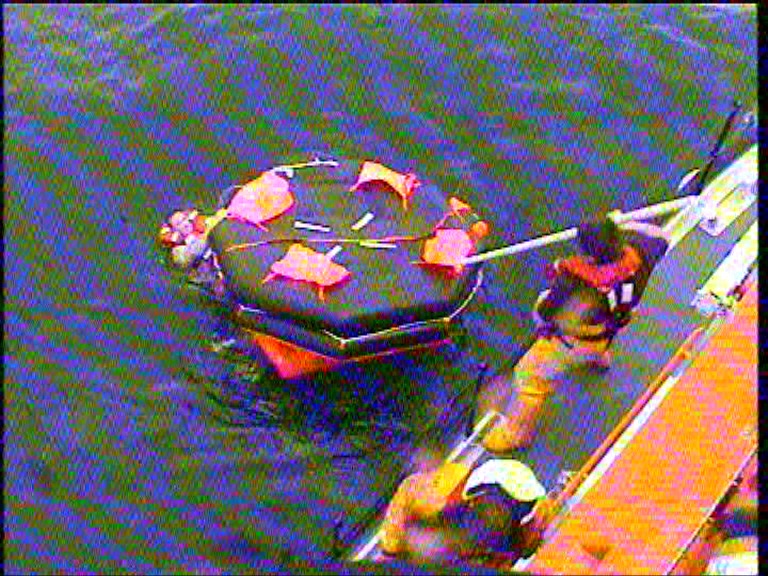
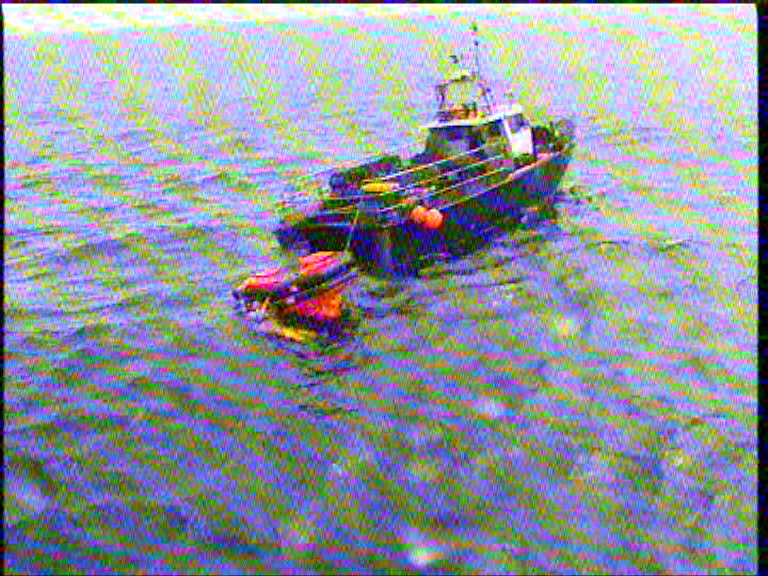
Related Safety posts
RNLI Lifeboats in Ireland
Safety News
Rescue News from RNLI Lifeboats in Ireland
Coast Guard News from Ireland
Water Safety News from Ireland
Marine Casualty Investigation Board News
Marine Warnings
Coastguard Pilot Flies 500th Mission
Minister for Transport Noel Dempsey yesterday congratulated an Irish Coast Guard pilot who has just completed his 500th rescue mission, becoming one of a handful of helicopter pilots in western Europe to have done so.
On July 11, operating from the Irish Coast Guard base at Waterford, Capt Rayner and his crew attended an incident 10 nautical miles east of Waterford Airport, where multiple casualties were in difficulty in the water.
On rescuing the party, one injured male was transferred to Waterford Regional Hospital for treatment. With that operation, Capt Rayner joined an elite group of SAR crewmembers who have achieved an impressive 500 rescue missions during their careers.
Ireland’s Minister for Transport, Noel Dempsey, said: "Martyn epitomises the dedication, experience and expertise that makes the Irish Coast Guard one of the best in the world. I congratulate him on his achievement of 500 rescue missions and wish to publicly commend the valuable contribution he has made, and continues to make to SAR in Ireland."
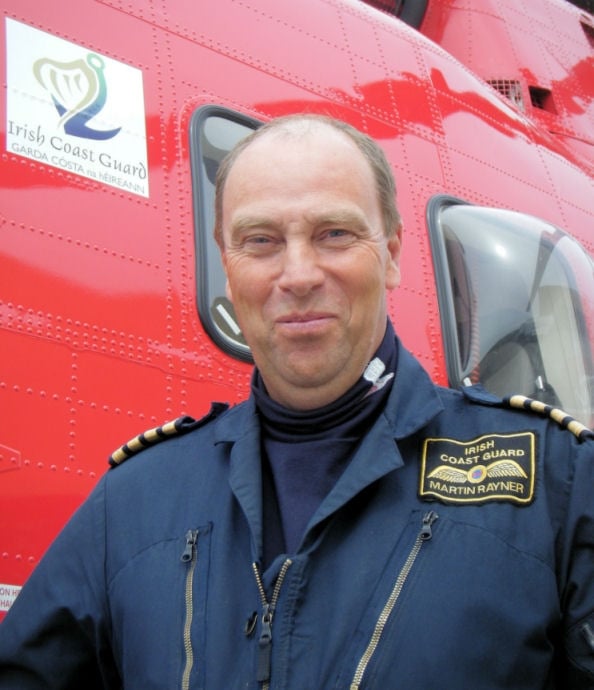
He commenced flying on the Irish Coast Guard contract in 1991 to set up the first Irish Coast Guard SAR base in Shannon Airport. Over the following 10 years Capt Rayner guided the Shannon base as chief pilot, line trainer and SAR Captain. He spent many years flying West of Shannon in all weather conditions, commanding the R115 Shannon base on missions far into the Atlantic Ocean.
“We are delighted for Martyn. This level of experience is rarely seen amongst SAR crew worldwide. We are very pleased to have the benefit of Martyn’s calibre of experience flying SAR missions around our coast,“ said Mark Kelly, managing director of CHC Ireland.
“Most SAR pilots fly an average of 20 missions per year. Martyn has been accident free for his entire career with CHC and is a shining example of our commitment to safety.”
In 2002 Capt Rayner, along with his wife Maureen, temporarily left Irish SAR for the Far East to fly offshore of Brunei. He returned to Ireland in 2005 and was welcomed with open arms to the newly established Waterford Base.
“Everyone at CHC is immensely proud of Capt Rayner’s unique achievement in reaching 500 missions. His vast experience, patience, sense of humour and knowledge of SAR is the backbone of our operation today,“ said Capt Dara Fitzpatrick, chief pilot, CHC Waterford Base.
CHC Ireland is an affiliate of CHC Helicopter through its ownership interest in EEA Helicopter Operations B.V. CHC Helicopter is the world’s largest offshore helicopter operator and provides civilian search and rescue services in Ireland, the UK, Denmark and Australia. Earlier this month another CHC SAR crew was recognized with a “Best of Irish” award for their role in successfully recovering the pilot of a light aircraft that crashed in the Irish Sea.
Lifeboat Creates Wash to Assist Yacht Aground
Baltimore RNLI inshore lifeboat Bessie, was launched this morning to assist a yacht that had gone aground at an area called the Sound, North West of Baltimore Harbour. The alarm was raised at 11:52am when the 36ft Sun Odyssey yacht was seen aground across the Harbour. Helmsman Youen Jacob with his crew of Kieran Collins and John McDonagh made their way to the stricken vessel on an RNLI twin engine Atlantic 75 RIB. On arrival at the scene they found the crew hauling on their anchor line in an attempt to pull themselves off the rocks. The inshore lifeboat gave assistance by creating a wash which lifted the boat from its rocky perch. The lifeboat then escorted the yacht back to Baltimore Harbour. The yacht did not suffer any significant damage and all four passengers on board, two men and two women were uninjured.
Related Safety postsRNLI Lifeboats in Ireland
Safety News
Rescue News from RNLI Lifeboats in Ireland
Coast Guard News from Ireland
Water Safety News from Ireland
Marine Casualty Investigation Board News
Marine Warnings
Lake Lifeboat Goes on Show
Lough Derg RNLI Lifeboat Crew is inviting the public to visit the lifeboat station on their annual Open Day, next Saturday July 17th, from 11am until 3pm. The Lifeboat Station is located on the grounds of Lough Derg Yacht Club in Dromineer. More from Eleanor Hooker, the lake lifeboat PR here:
History of the RNLI Station at Dromineer
On May 25 2004, following a year of intensive training on the water and in the classroom, Lough Derg RNLI Lifeboat Station began full time service. The first shout came during the crew's initial training in April 2004, when a cruiser went on the rocks in Church Bay, on the County Clare shore. To date the lifeboat has launched on over one hundred and fifty shouts. Most launches have been to assist vessels that have grounded or have suffered engine failure. A majority of the call-outs have been following requests to launch from the Coast Guard based in Valentia. The lifeboat covers the entire lake; from Portumna Bridge at the northern end of the lake to Killaloe on the southern end and downstream to Parteen Weir. The lifeboat is on-call 24hrs a day, 365 days a year. The first Atlantic B class lifleboat based at the station was Clothworker, which has since been replaced by the Altalntic 74 Vera Skilton.
There has always been an RNLI fundraising branch based in Nenagh, long before the lifeboat station was set up. The local fundraising committee and the lifeboat station crew and committee work closely together to raise awareness of the activities and crucially the costs of running a lifeboat station; the lifeboat depends entirely on public donations and legacies for its income. The RNLI lifeboat also enjoys a great working relationship with other rescues services on and off the water.
The volunteer crew train twice a week, in the classroom on Wednesday evenings and on the water on Sunday mornings. Apart from the three newest recruits, all crew have been on a crew training or helmsman course at the Lifeboat College at Poole on the south coast of England. Ruth Spillane travels to Poole later this month to complete her Crew Training Course.
On June 8 2006 at the official opening of the new headquarters of RNLI Ireland in Swords, President McAleese made the following comments about the RNLI lifeboat service and her volunteer crews;
There are approximately 1,000 volunteer lifeboat crew members in Ireland, including 80 women, most of whom are not from professional maritime backgrounds. This organisation is a classic example of the phenomenal, unselfish, generous voluntary endeavour in literally thousands of spheres that goes on in Ireland around the clock, week in and week out, year in and year out without thought of thanks or recognition. There isn't in any of it the remotest trace of exhibitionism or grandstanding. There is not in any of it an easy option, a lazy cynicism. Here you will find authenticity, integrity, humility, spontaneous goodness and in this organisation in particular, you will find men and women who are prepared to risk their lives at any moment for people who may be complete strangers and even occasionally complete fools.
I have been privileged to see at first hand the dedication and commitment of our lifeboat crews. I know how much of themselves they invest in training and how much time is invested in finding the resources to keep the levels of skill, equipment and services at the highest level possible. If there is fear you don't look for an easy out, if there is discomfort you do not complain, if there is danger you face it. And by some miracle you get a deep personal fulfilment from all this giving which keeps you involved, keeps you faithful to the RNLI often over a lifetime.
We take pride too in the fact that RNLI Ireland operates on an all–island basis, transcending all the vanities of jurisdictional issues to ensure that the sea which is no respecter of man-made boundaries is tackled with the best will that can be harnessed, not just on this island, but in this region of Europe.
We hope that as many of the public can attend the Open Day next Saturday to meet crew and members of the operations team. Dromineer will be a busy colourful place as over sixty boats (always dressed brightly for the event) taking part in the Lough Derg rally will be coming into the public harbour and in Lough Derg Yacht Club the Shannon-one Design dinghies will be taking to the water for a day of racing.
Cork Week Bound Yacht Rescued by Ballycotton Lifeboat
A yacht bound for Cork Week regatta sought assistance from the emergency services tonight when their vessel ran into difficulties eight miles east of Ballycotton Bay in East Cork. The yacht was sailing from Arklow to Cork Harbour to attend next week's Royal Cork regatta at Crosshaven. Ballycotton lifeboat station was contacted and requested to launch. They reached the yacht with four people on board at 17:50 and established a tow. Sea conditions in the area were unpleasant with the wind blowing F6 / F7. The Irish registered yacht was towed to Ballycotton harbour and safely secured alongside the pier wall but it has not been named by the Ballycotton lifeboat.
Lifeboat Towing Yacht to Ballycotton Harbour
Ballycotton RNLI lifeboat launched this evening at 17:15 to lend assistance to a 31 ft. yacht who sought assistance 4 miles east of Ballycotton in East Cork. The lifeboat arrived on-scene and established a towline at 17:50. The Irish registered yacht, with four persons aboard, is under tow to Ballycotton harbour. They are expected to arrive at approx. 18:45.
Overdue Divers Rescued by Coastguard Helicopter
Liverpool Coastguard received a '999' call at 12:30 pm from the dive boat informing them of the situation and requesting assistance after two divers had not resurfaced and were last seen at 12 noon.
Drumore Coastguard Rescue team was tasked and the Portpatrick and Stranraer, RNLI lifeboats were requested to launch as well as the independent Port William inshore rescue boat. A Rescue helicopter from Prestwick was scrambled to the scene. The vessel 'Go West' assisted in the search.
Paul Campbell, Watch Officer, Liverpool Maritime and Rescue Coordination Centre, said:
"Once the casualty vessel was located the search and rescue units on scene carried out a search around the Mull of Galloway Lighthouse with the Rescue helicopter locating the two casualties and winching them to safety."
The Coastguard always advises divers to let the Coastguard know where and when you will be diving. Always keep a close eye on the weather and sea conditions and make personal fitness a top priority for safe diving. Familiarise yourself with new or different gear before diving and ensure that you dive within your limits.
At 5.45pm yesterday evening Monday July 5th, Fenit RNLI Lifeboat launched to assist a 40 foot Catamaran which was taking on water. The vessel which had left Donegal en route to France was 20 miles west of Loop Head and there were 2 people on board.
On arriving at the location of the stricken vessel volunteer crew members with Fenit RNLI Lifeboat immediately boarded the catamaran with a salvage pump and proceeded to pump the water from the vessel. Once they were happy that this process was working satisfactorily they put the vessel on tow and proceeded towards Fenit.
On arrival back in Fenit just before 1am this morning, arrangements were in place by Fenit RNLI members on shore and the catamaran was lifted onto the Pier by the Fenit Harbour Board Crane.



























